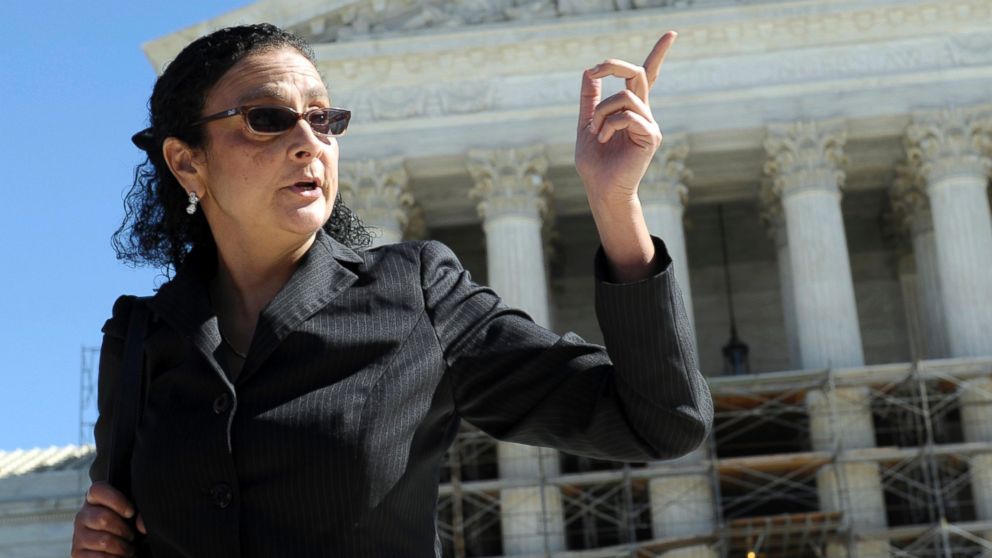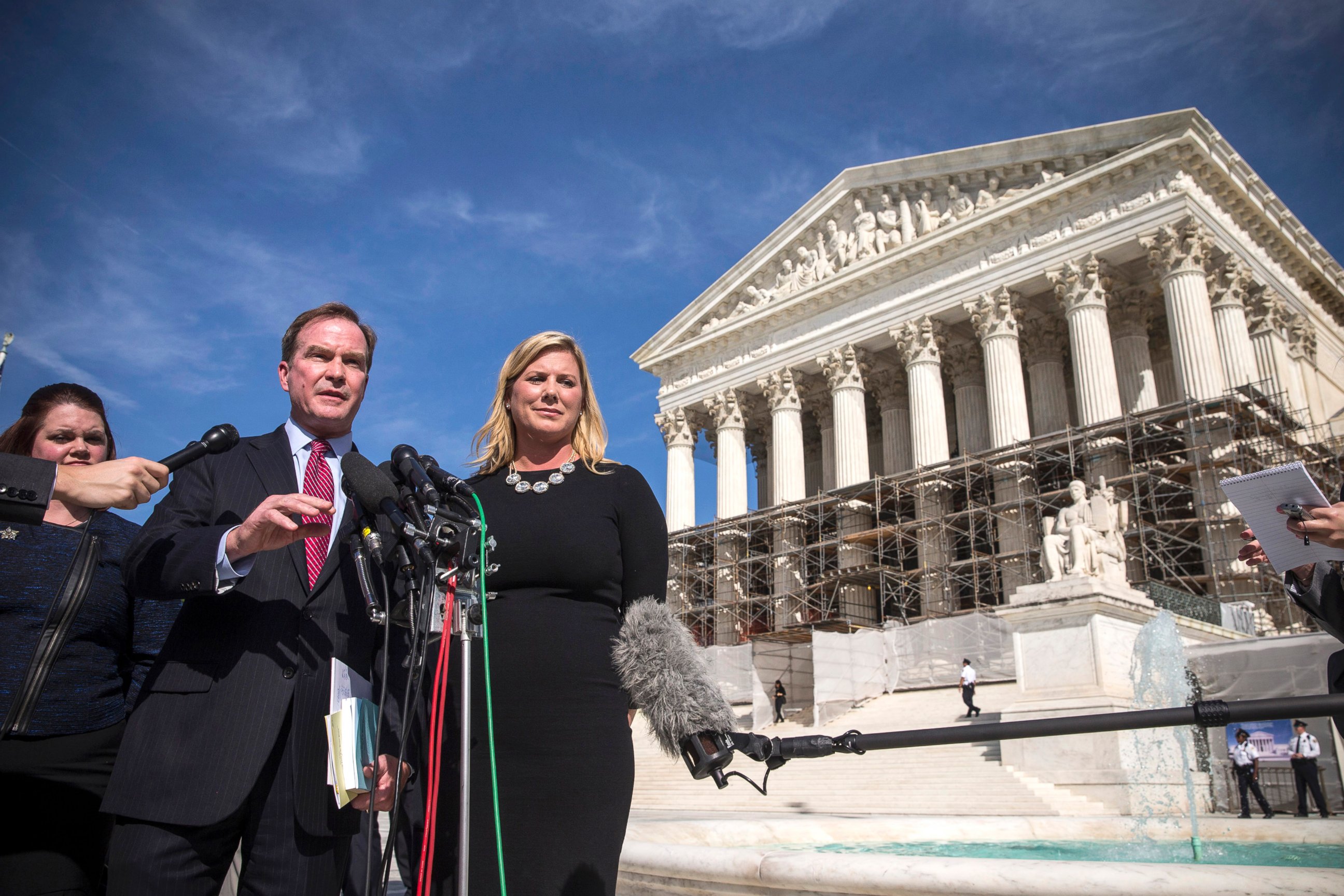Meet the Women Behind the Supreme Court’s Controversial Affirmative Action Decision
They both say they're civil rights crusaders, so why are they bitterly opposed?

April 26, 2014 -- Behind the scenes of every controversial Supreme Court decision are real people: Homer Plessy, of Plessy v. Ferguson. Oliver Brown, of Brown v. Board of Education. Mildred Loving, of Loving v. Virginia.
And this week’s landmark decision was no different.
The Supreme Court upheld Michigan’s ban on affirmative action in public university admissions on Tuesday in a case called Schuette v. Coalition to Defend Affirmative Action.
For one woman, the court’s decision heralds a new age of equality and represents an important step in the nation’s long trudge towards a truly colorblind society. For another, the decision is appalling –- practically a re-legalization of Jim Crow.
In their own eyes, both women are civil rights crusaders -- but in a pair of interviews with ABC News this week, it’s clear how bitterly opposed they remain.
JENNIFER GRATZ: ‘I could have walked away’

The woman who spearheaded the affirmative action prohibition, Jennifer Gratz, calls the court’s ruling “a victory for the people of Michigan –- a victory for equality.”
This isn’t the first time she has battled race-conscious admission policies in the Great Lakes State.
Gratz was denied admittance to the state’s flagship university, the University of Michigan, in 1995. She sued, claiming that the school’s affirmative action policy -– a point-based system that automatically awarded minority students one-fifth of the 100 points required for undergraduate admission -– amounted to racial discrimination. It violated the Equal Protection Clause, her lawyers said, and was therefore unconstitutional.
The Supreme Court agreed, saying U-Michigan’s undergraduate admission policy made race “decisive for virtually every minimally qualified ... minority applicant.” But in a ruling handed down the same day, the justices made it clear that a different system would have been acceptable. Diversity, the court said, constitutes a “compelling state interest” that “justifies” considering race.
“I could have walked away at that point,” Gratz told ABC News. “But that win was simply a personal victory, not a victory for the principle.”
So Gratz launched the Michigan Civil Rights Initiative, a ballot measure that banned “preferential treatment ... on the basis of race” at public universities and other public institutions.
“That was a nasty campaign, to say the least,” Gratz said. “But I think the government should get out of this business [of focusing on race] and judge people on their character.”
In Gratz’s view, the only “true” equality is completely colorblind. The government’s pre-occupation with racial divisions obscures other aspects of diversity, she said.
She launched the XIV Foundation, which advocates for the MCRI, based on the premise that “equal treatment is the essence of civil rights.” The backlash was intense.
You could call Driver the anti-Gratz. She’s the head of By Any Means Necessary: The Coalition to Defend Affirmative Action, and she argued against Prop. 2 at the Supreme Court.
In her opinion, Gratz and her foundation are just intolerant.
“I do think she’s racist,” Driver told ABC News.
Gratz fired back, calling By Any Means Necessary a “radical” organization.
According to Driver, a Harvard-educated African-American woman who acknowledges she has benefitted from race-conscious admission policies, affirmative action is “necessary to counter racism in K-12 education.”
It’s the only way to combat the “presumption of black or Latino inferiority” still prevalent in America, she says.
This country, she points out, is quickly becoming a majority minority nation, yet minorities are still under-represented in prestigious institutions. They also bear the burden of ambassadorship –- the feeling that they’re representing not only themselves, but their entire race.
“That’s unfair,” Driver says simply.
She believes boosting minority enrollment eases some of that pressure. It also serves the rest of the student body by preparing them to interact with people from varied backgrounds.
By Any Means Necessary’s attorney spokesperson concurs.
The ruling is “really, frankly, ridiculous,” George Washington said in an interview with ABC News.
“The Supreme Court is putting their heads in the sand,” said Washington, who called Justice Anthony Kennedy (author of the majority opinion) a “frighteningly bizarre justice.”
So Who’s Right?
Both women consider themselves champions of equality. Whether you support Gratz or Driver comes down to your interpretation of a 14-word phrase found in the Fourteenth Amendment.
The Equal Protection Clause -– colloquially referred to as the EPC –- simply says that the government must not “deny to any person within its jurisdiction the equal protection of the laws.”
But what the EPC lacks in length, it more than makes up for in controversy.
In Gratz’s opinion, the language of the EPC mandates that people of all races be treated the same. Granting minorities preferential treatment means discriminating against the majority, and that’s not fair either.
“Saying that equality violated the equal protection law –- it would have been comical if they weren’t serious,” Gratz said.
In Driver and By Any Mean Necessary’s view, it’s the amendment’s intent that’s important.
“The Fourteenth Amendment was designed specifically to protect the rights of black people in the south, who are recognized to be victims,” Washington explained. “It was never a colorblind operation.”
According to Washington, the court’s decision “ignores why the amendment was passed.”
To be clear: the court didn’t rule on the utility of affirmative action in general. The justices were careful to clarify that they were ruling only on whether Michigan voters had the right to decide the issue.
“This case is not about how the debate about racial preferences should be resolved. It is about who may resolve it. There is no authority in the Constitution of the United States or in the Court’s precedents for the Judiciary to set aside Michigan’s laws that commit this policy determination to the voters,” Justice Kennedy wrote.
So the voters’ decision stands.
Where Do We Go From Here?
Few people will argue against diversity per se. But what, exactly, constitutes diversity? And which types of diversity are important?
Does the percentage of African-American students impact learning? How about the percentage of low-income students? Or the ratio of musicians to non-musicians?
“Diversity is more than skin color,” Gratz said. “It’s unfortunate that administrators reduce it to skin color.”
Diversity, in general, is “a noble goal,” added Gratz. “But I don’t think it should trump anyone’s right to be treated equally."




